COILED TUBING DRILLING INCREASE EFFICIENCY, LOWERS COST OF RE-ENTRY SIDETRACKING
It is well-documented that incremental gains in performance in sport can accumulate to create a winning team. Oilfield operations are no different, and it is important to take advantage of this potential to strip unnecessary cost from interventions. Irrespective of the price of oil, as an industry, we are under economic and societal pressure to be as efficient as possible.
In the current environment, extracting the last barrels from existing assets by re-entering and drilling laterals in existing wells is a prudent and economically advantageous strategy—provided it can be done cost-effectively. Coiled tubing drilling (CTD) is a technique that provides improvements in efficiency in many operational areas, compared to conventional drilling, but remains under-exploited as a technique. This article describes how operators can take advantage of the efficiency gains, and, therefore, cost reduction, that CTD can offer.
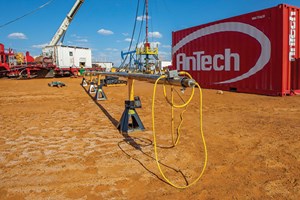
A track record of success. Coiled tubing drilling (CTD) technology has, so far, found two successful but different niches in Alaska and the Middle East, Fig. 1. In North America, the technology has not yet reached widespread adoption. Also known as rigless drilling, a description of how CTD technology can be used to access bypassed reserves behind pipe, at low cost, is provided; in some cases, the payback period for the new lateral can be measured in a few months. Not only is it possible to utilize CTD in a low-cost application, but the inherent advantages of coiled tubing for underbalanced operations can provide operational flexibility that dramatically increases the probability of success of each wellbore in a depleted field.
CTD has been utilized to drill underbalanced, to maximize production from depleted conventional oil and gas fields. This application of the technology has been applied very successfully in declining, low-permeability reservoirs in the Middle East, with the number of CTD rigs increasing slowly over the last several years. When underbalanced CTD is utilized, it can either be through new wells or re-entry of existing wells. The other major successful multi-year application of CTD has been on the North Slope of Alaska, where CTD provides a low-cost method of re-entering old wells and increasing production. The technology in this application dramatically increases the number of marginal barrels available to the producers on the North Slope.
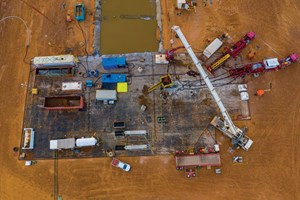
Efficiency gains drive cost reduction. There are two ways in which CTD can be more cost-effective than conventional drilling. First, we see it in total cost per barrel, which is less through a CTD re-entry than through a new infill well. Second, we see it through a reduction in variability in well costs, due to the adaptability of coiled tubing. Here are various efficiencies and advantages:
● Minimal or no site preparation required. There is little site prep that needs to occur for a CTD operation to be carried out, Fig. 2.
● Low mobilization. Coiled tubing units are able to mobilize large distances, much more cost effectively than a big rig.
● Ability to deal with lost circulation. CTD is an inherently managed pressure drilling operation, even when not drilling underbalanced. The greater pressure control allows for losses to be avoided or reduced, however, if that is not possible, then it is possible to allow losses and drill ahead, unlike on a conventional drilling rig. The losses are also less costly in a lot of situations, as a water-based fluid can be used instead of more expensive oil-based mud.
● Tripping speed. It is possible to trip an order of magnitude faster than on a conventional rig. In formations that are abrasive and, therefore, require bit trips, significant time can be saved on bit trips when drilling with coiled tubing.
● Minimum time from decision to new barrels. Coiled tubing is a call-off service and can be mobilized with 24-hr notice. This means that new barrels can be brought to market in as soon as a week, allowing operators to take advantage of sudden price moves up and reduce their exposure to sudden moves down. It is possible to bring new barrels to the market while drilling, if drilling underbalanced.
● Hybrid overbalanced/underbalanced. Some formations, such as the Buda and the Austin chalk, have natural fractures that are extremely productive. It is possible that some wells will be drilled and never intersect a natural fracture. These wells need to be drilled applied as low-cost as possible and then sometimes hydraulically stimulated in order to achieve any meaningful production. However, other wells intersect highly productive fractures, which then cause lost circulation issues. A conventional rig needs to cure the losses by plugging up the fractures; this means that any potential gain in production from intersecting the fracture is lost, and the well still needs to be stimulated. When utilizing CTD, it is possible to pause drilling when a significant natural fracture zone is intercepted and switch over to underbalanced drilling, protecting the fracture and therefore maximizing production from the well. Potentially, it even avoids the cost of hydraulically stimulating the reservoir.
Operational sequence. Rigless drilling can be carried out, utilizing CTD for all operations or a mix of a workover unit and coiled tubing. The decision on how to set up the project depends on the availability and economics of the service providers in the area. Utilizing workover units, wireline units and coiled tubing—as the situation demands—can bring many benefits in terms of operational time and cost. Overall steps include:
1. Pull upper completion/artificial lift (well-dependent).
2. Abandon lower zone.
3. Conduct casing exit.
4. Drill reservoir section with coiled tubing.
5. Optional: Run liner/lower completion (well-dependent).
6. Optional: Install artificial lift (well-dependent).
Steps 3, 4 and 5 can be carried out using the CTD package. The other steps should be carried out by a workover unit. In locations where workover units are lower cost, then it is possible to perform the casing exits in advance before mobilizing the CTD package. This ensures that the CTD package is only paid for when it is providing the maximum value.
The optimum solution in North America is usually to carry out steps 1, 2 and 3 with a workover unit on multiple wells before bringing in the CTD package. CTD operations can be as short as two to four days, total, depending on the target formation. So, it is possible for the workover unit to follow behind the CTD operation, and then both the CTD package and workover package are fully operational in tandem.
Optimizing the equipment used and the operational sequence can have significant impact on the total cost of the operation. Where the cost reductions can be found will be dependent on the location of the operation. In some locations, conducting non-drilling operations on a workover unit is advisable; in others, it may be that the best solution is to utilize the coiled tubing unit for all the work.
In some locations, it will be cost-effective to have two fluids return packages and to rig up the second as you are drilling on the first well. The fluids package from the first well then moves onto the second, i.e. leapfrogging the drilling package. This can minimize the rig-up time on each well and keep costs down. The flexibility of coiled tubing allows this optimization to the schedule, to maximize operational time and minimize cost.
An unmatched capability to control pressures. The most obvious capability of CTD is in controlling the pressure in the wellbore exactly. Coiled tubing units are designed for underbalanced operations, and this allows for downhole pressure to be managed as a standard with the utilization of a choke, whether drilling overbalanced or underbalanced.
As mentioned earlier, it is also possible to quickly switch from overbalanced, managed pressure drilling operations to underbalanced operations. In the past, CTD was viewed to have limitations, as regards the length of lateral that could be drilled. The limitations have now been increased substantially, as demonstrated in a recent project on the North Slope of Alaska, where lateral lengths exceeding 7,000 ft were achieved. This is possible through use of a Continuous Rotating Orienter in the BHA, larger-coil diameters and extended-reach tools.
Equipment needed for CTD package. The equipment required for the CTD package depends on the formation and whether the option to go underbalanced is required. The variation comes primarily from the fluids return side. On the pump inside, a simple tie-in point for nitrogen injection can be put in place easily, ready for a switch to two-phase drilling if required, Fig. 3. Nitrogen pumps are mobilized easily in most locations in the U.S. However, if there is a need to have the ability to switch to underbalanced drilling operations, the returns side requires some more-considered engineering in order to have the operational flexibility but keep the costs down.
The first component downstream of the BOP stack is the choke manifold. This is standard on all coiled tubing drilling operations to control bottomhole pressure. The next piece of equipment in line is the separator. In overbalanced operations, where there is no intention to go underbalanced, then this can be a simple mud gas separator and be bypassed unless dealing with a well control situation. If there is an intention to go to underbalanced, then either a 3- or 4-phase separator can be placed in line from the beginning, or drilling can be stopped, and a full separator can be rigged in. The separator should be linked up to a flare placed at a safe distance.
After the separator there will be tanks which will function as the pits. These can be simple open top frac tanks or the production tank farm if possible. Due to the small volume of cuttings on a CTD re-entry there is little need for shakers. The cuttings will settle out in the separator or in one of the frac tanks. If not utilizing a separator then a weir tank which has baffles installed in the tank to assist with separation of the separators. A further step is to include a centrifuge connected to the final stage to remove the remaining solids before recirculating. A mix tank can be included in the tank/pit system to mix a simple, solids free mud system if that is desired or in some cases the mud can be bought pre-mixed. After the first well it should be possible to move the mixed mud between wells and drill multiple wells using the mud system and so the mix tank only needs to be rigged up once.
Considerations for drilling fluid. There are many options of suitable drilling fluids for CTD. The key is to use simple, solids-free fluids. An inhibited brine with polymer is standard for overbalanced or managed pressure applications. This drilling fluid should be substantially lower-cost than the drilling mud utilized on conventional rigs. This not only reduces the cost of the operation, but if there are any losses, then they minimize any additional cost associated with the losses.
When drilling underbalanced, it can be either two-phase drilling fluid or a single-phase drilling fluid. This will be determined by the reservoir pressure and well design. Single-phase fluids for underbalanced drilling are water, brines, oil or diesel usually. Each one of those can be lightened further by pumping nitrogen at the same time.
System economics can be enhanced substantially by drilling underbalanced through the minimization of skin damage/plugging. Drilling with a single-phase drilling fluid usually looks lower-cost at first, but operators can substantially improve their economics by minimizing skin damage and forgoing the need for costly stimulations and, in the end, have greater production.
Considerations for BHA. There are two important considerations when selecting a bottomhole assembly (BHA) for CTD. As mentioned earlier, rig-up and deployment time are especially important. Therefore, the first factor to consider is the total length of the BHA, Fig. 4. The BHA should be short enough, that it is possible to deploy entirely above the master valve with the injector held from a crane.
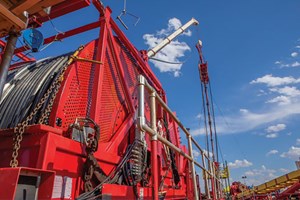
The deployment sequence is to place the BHA in a mousehole, bring the injector and lubricator over the mousehole, make up the BHA to the cablehead at ground level, pull the BHA into the lubricator, move the injector and lubricator back over the well, and make up the connection to the BOPs. This method means that there is no need for a tower or pressure deployment—making the deployment fast and safe.
The second consideration is the type of formation being drilled. In CTD, the orientation of the toolface for directional drilling comes from an orienter module that is part of the drilling BHA. This orienter must have the capability to continuously orient, i.e. to rotate clockwise or anti-clockwise without needing to stop unless the directional driller desires it. This allows a perfectly straight hole to be drilled and thereby maximizing weight on bit (WOB) and lateral reach. The increased WOB either helps drill a long lateral or a shorter lateral with high ROP.
South Texas case study. There are over 20,000 horizontal wells targeting the Eagle Ford shale. The play has been active for over a decade, and the number of marginal wells that will require P&A is increasing. All wells targeting the Eagle Ford shale will pass through the Austin chalk, a well-known reservoir that has produced commercial quantities of hydrocarbons for many years. The infrastructure is already in place to take advantage of any additional barrels that can be brought to market.
The challenges of drilling the Austin chalk are in large part due to losses. The carboniferous formation is a fractured and if a large fissure is intersected then significant losses can occur. Often the drilling is carried out with oil-based mud and therefore the cost of the lost barrels of oil-based mud can add up to a significant proportion of the well cost. Not only is the cost of the lost mud an issue but when budgeting for the year the variability in well cost has to be taken into account; by reducing the variability in mud costs the operator can use capital more efficiently.
The mud that can be used is a simple, solids-free brine, and the downhole pressure can be controlled through the choke. For example, a 4% KCL brine-based mud with xanthan gum as the viscosifier and starch for filtration control would be suitable. The weight of the fluid would be around 8.6-9.0 ppg, and any additional pressure required to exceed the reservoir pressure would be applied at the choke.
If losses occur, then the drilling can continue if the losses are acceptable, the choke can be opened to bring the circulating pressure closer to the reservoir pressure, or the choke can even be closed for a period until the losses are cured. The flexibility and adaptability on coiled tubing is significantly more than on a conventional rig, when it comes to pressure control.
An alternative strategy that can also be considered when drilling with coil is to switch to underbalanced drilling as soon as a highly permeable fracture is intersected; this solves the lost circulation issue and protects the productivity of the fracture. This means that if no fractures are intersected, then the well can be completed as normal at low cost. But if fractures are intersected, then the formation can be protected from damage and the production maximized by drilling underbalanced. With suitable equipment and trajectory design, it is possible to achieve a lateral in the Austin chalk that is over 7,000 ft long.
Summary. This article has introduced the concepts and considerations when planning a low-cost re-entry drilling campaign by utilizing coiled tubing drilling. Each application will be slightly different, and this article has covered the main considerations at an introductory level. The technology of CTD is well-established, but the applications have been kept to two particular areas, which backed the technology in the early years. It is now possible to take advantage of CTD technology without the financial commitments of a long campaign.
Value potential. There are hundreds of thousands of producing wells that will eventually need to be abandoned but still have commercial quantities of oil and gas behind pipe. CTD provides a way to defer the abandonment liability and access the bypassed reserves in a safe manner and with minimal capital expenditure. It is also possible to bring these barrels to market in an extremely short time, allowing operators to take advantage of high prices in a matter of weeks, not months, and without committing to long-term contracts.
Efficiency improvements benefit the industry as a whole, whether it’s through digitalization, environmental improvements or improved operations. Coiled tubing drilling has played its part in lowering costs in specific areas of the world and now, as the industry changes, it can now offer those same benefits at a bigger scale.




 Upload RFQ
Upload RFQ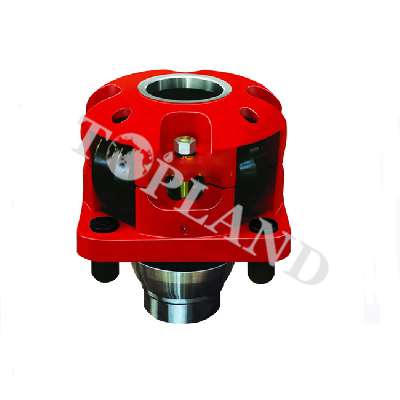




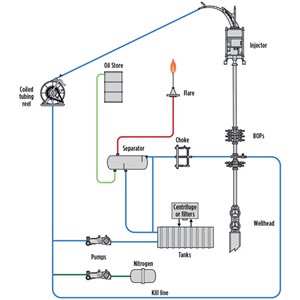

 Twitter
Twitter Linkedin
Linkedin Facebook
Facebook YouTube
YouTube Sales@toplandoil.com
Sales@toplandoil.com +86 21-50890868
+86 21-50890868 Head Office: 8-1011,Lane 5600, Chuansha Road, Pudong, Shanghai, China
Head Office: 8-1011,Lane 5600, Chuansha Road, Pudong, Shanghai, China 